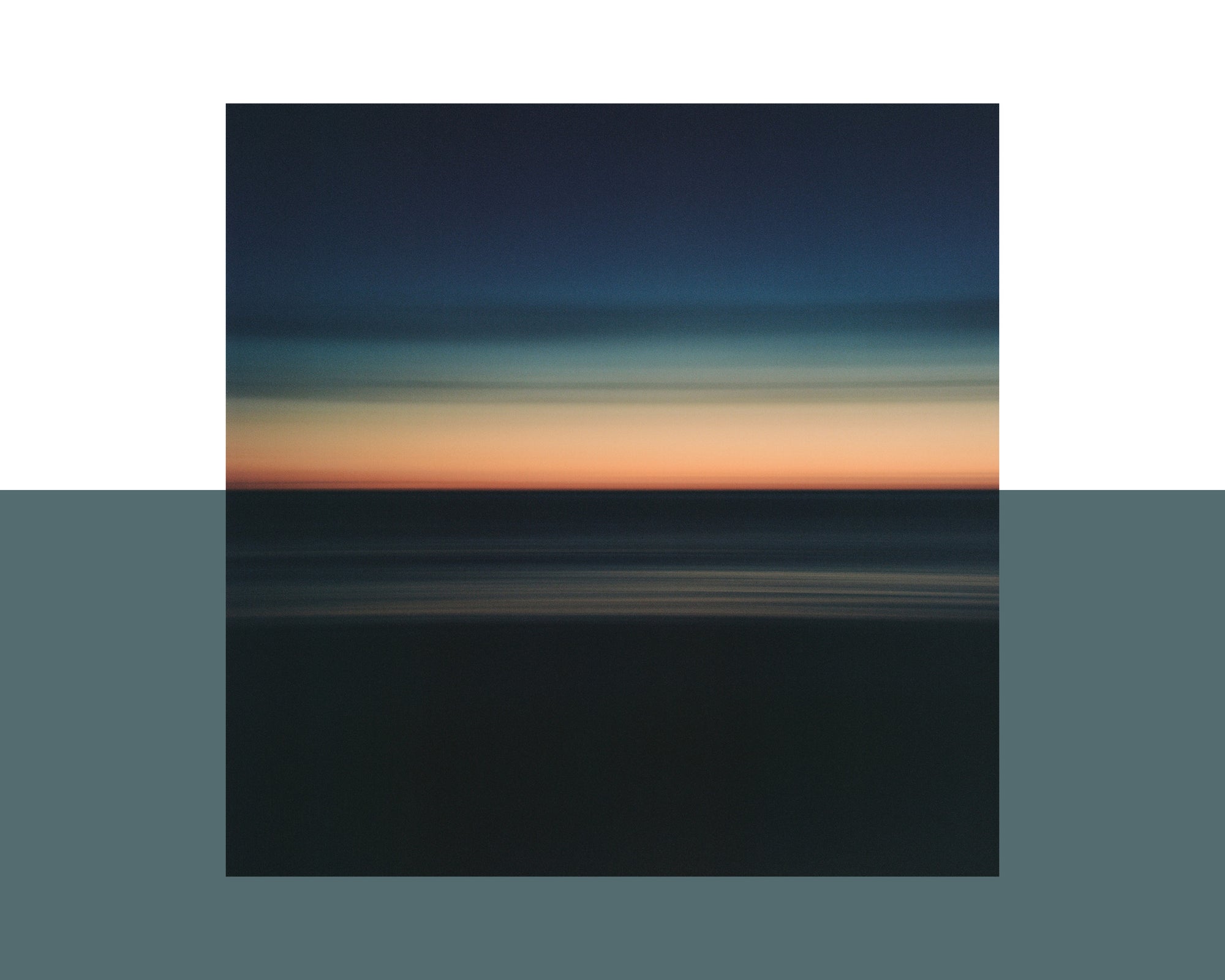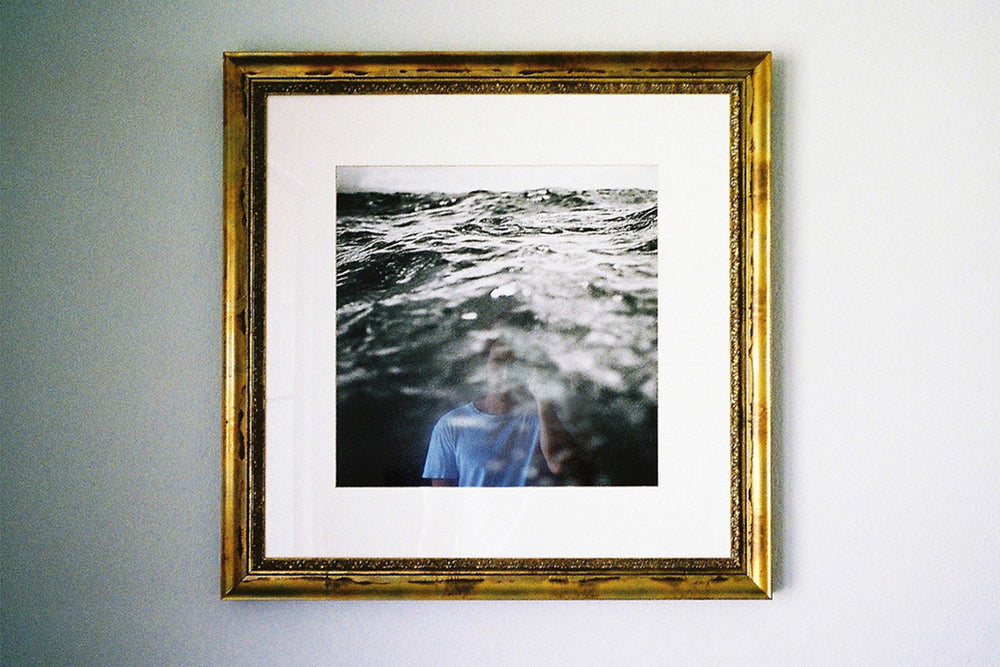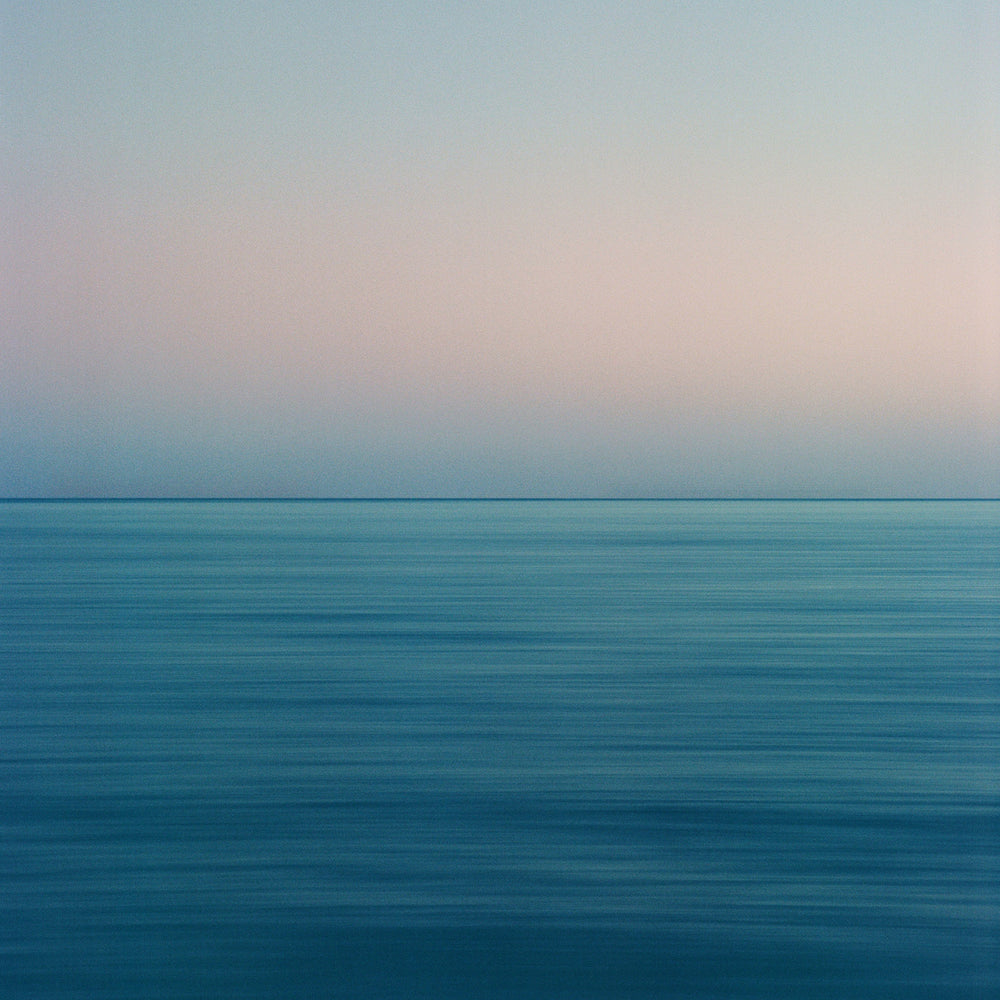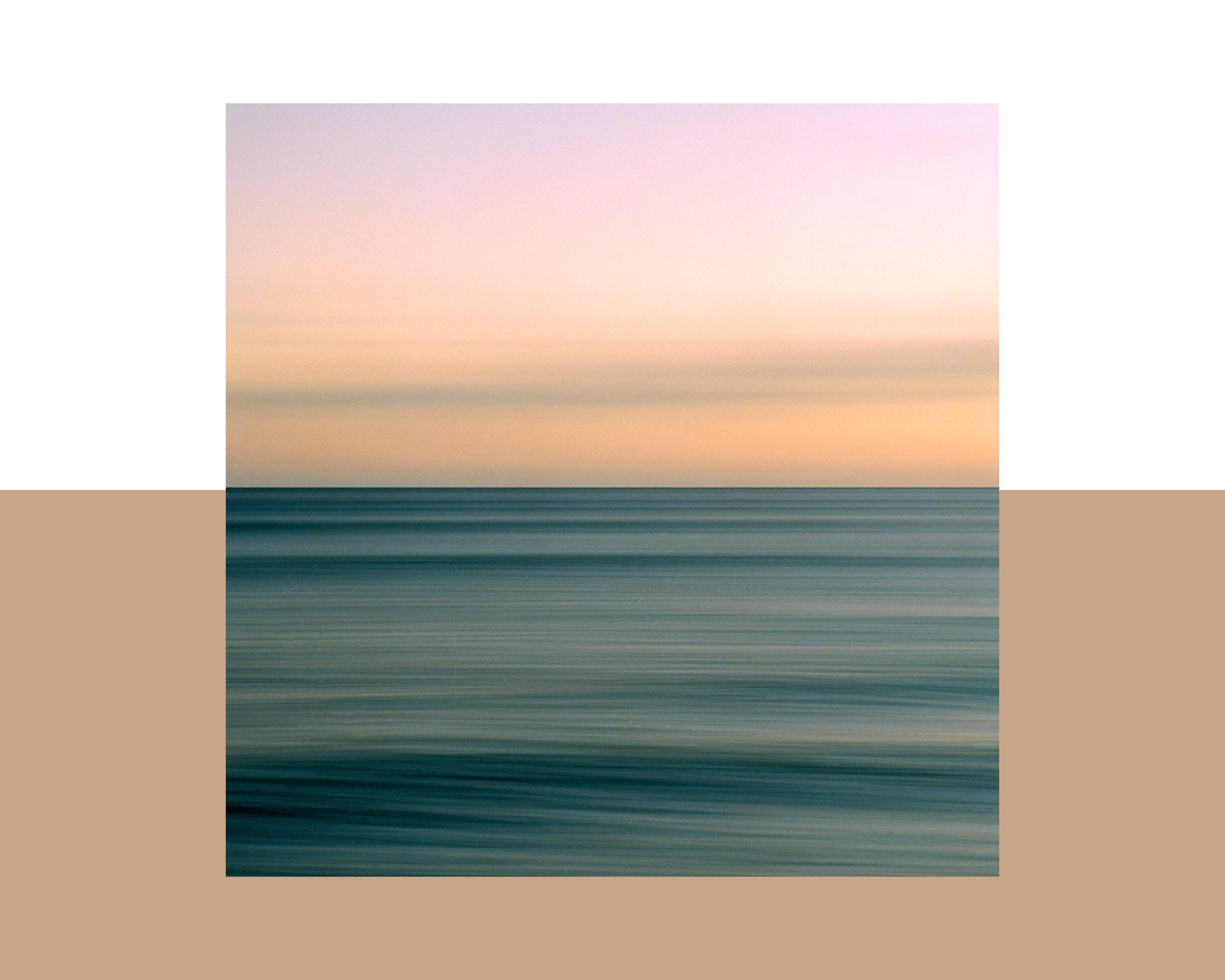Chapter 1 /
In Conversation with photographer Mark Kushimi
Words: Courtney Chew
Photography and art: Mark Kushimi
“Hold your head underwater and enjoy the silence.”
Art is a medium we lean on to help us bring community together and increase awareness about a greater message.
We are honoured and excited to share the captivating work of Mark Kushimi – one of our favourite photographers from Hawai ‘i. Mark is passionate about documenting life's moments, seemingly allowing the viewer to get a glimpse into someone's story or encourage them to reflect on their own.
Forever Drowning is a special piece from his Oceanscape series which is being exhibited for the first time in our city, exclusively for our holiday event: The Break Room.
Keep reading below for our Q+A with Mark and come see the piece in person at The Break Room, November 26th-27th.
OCIN: You grew up in Hawai‘i, one of the most beautiful places in the world. Do you feel your home has had an influence on what you do? Is there anything about the Island that you hope to share with the viewer, through the work that you create?
MK: To be honest, I grew up skateboarding so in my teens and into early adulthood—though I lived on an island—I was really into cement. In college, I began studying architecture then became obsessed with the European design aesthetic of the mid-century so after a couple of years of struggling through calculus I switched my major to design. When I graduated college I felt like I had to move away from Hawai‘i to surround myself with things that inspire me. In the end, instead of throwing myself into the fire, I decided to make an effort to strike a flame here in the Islands. At the time, just about all of the advertising/marketing and visual communication in Hawai‘i was definitely targeted toward tourists; postcard moments, overly saturated landscapes…not to mention the lackluster typography. I mean, Hawai‘i has those postcard moments—and I’m a fan of all types of design—but I didn’t think that aesthetic truly represented all of Hawai‘i…especially my peers, so when the opportunity came to get together with handful for friends to start a print publication, Contrast, I jumped on it. Contrast became a platform for us to show the world “our” Hawai‘i while also introducing locals to inspirations that we seek out—here and abroad. Producing a print magazine while holding a full time design position for a fashion company was difficult…but Contrast is and will probably be the most rewarding thing I have been a part of.
OCIN: Tell us a bit about how the diversity of your creative outlets shaped your journey and how it inspired your photography career.
MK: I don’t really know if my creative outlets have been very diverse. I believe I approach most things with a similar mindset: that of a designer. I would say that my photographic style is the result of my training in architecture, design, and my upbringing in general. I compose the elements in a photograph as I would lay out a page in a magazine. My compositions are just about always calculated…consciously or subconsciously. Unfortunately—because of this—I miss a lot of candid moments as I try to move myself into a better position or as I wait for something to move or change within the frame. I was with a friend in Japan a few years ago and she posted a photo of me on Instagram with a caption, “Waiting for 45 minutes for @markkushimi to take a photograph.” [Laughs] I’m not sure if it was really 45 minutes but I was definitely standing in the middle of the street for some time.
OCIN: You’ve shared that you’re passionate about documenting life around you. I love how your photography is almost a glimpse into someone’s story; it’s almost as if you are sharing that moment with someone, observing them and wondering what they’re thinking about—how did this focus on capturing real life moments come to be your photography style?
MK: Thank you so much for saying that. I try to keep my photography as “honest” as possible. I’m not sure if that’s technically the right term…but sometimes you’re working on a project where you have a model at a breathtaking location in the perfect garments, and the result works well for a client. It’s a rewarding experience for the entire team. “Making” an interesting photograph is a skill that I have been practicing for quite some time, but to me, real life is the most beautiful thing. So I’ll be just as happy with a photograph of a stranger brewing a cup of coffee at a cafe that I snapped in passing as I am with an image that took a lot of work to create.

OCIN: Tell us a bit about your Oceanscapes titled ‘Forever Drowning’ – what inspired you to capture this consistent and beautiful relationship between the ocean and sky?
MK: ‘Forever Drowning’ didn’t start with the Oceanscapes. It started with a series of seemingly random captures that document my connection with the Pacific. The initial ten images in this series led to my first exhibit. A few years later I was invited to take part in a group show at the Hawai‘i State Art Museum which made me very nervous. At the time, I never really thought of my photographs as art. I wasn’t creating anything like a painter or sculptor—for the most part—I was documenting what was already there. I took a long look at my work up to that point and came up with an idea. It’s a long story but there was one image in particular that I captured in 2013 of an abstracted sunset which became the inspiration for the museum exhibit. I wanted to photograph sunsets with technique I used in 2013 and frame them in a way that they would seem like picture windows on the Museum’s wall. I had a mental image of a viewer looking at a piece as if they were enjoying a sunset at the end of their day contemplating the happenings of their own life, thus evoking an emotional response, not from the photograph, but from within themself.
OCIN: What are your favourite cameras to shoot with? Do you feel you start with your camera to inspire what you shoot, or do you start with the subject and theme to determine what camera to use?
MK: My favorites are my Leica M6 and Contax T3. They are both on the compact side which is essential for the way I play. I also have a Hasselblad 501CM which I use to capture the Oceanscapes, among other things. That camera shoots a 6x6 centimeter negative and is a bit slower in use so I tend to use it when I know what I’m going to photograph. With the Hassy, I have to be more deliberate, so I guess I start with the subject and pick the right camera for the task at hand.


"The oceans are both beautiful and dangerous...Beneath the surface, movement slows, sound is muffled, and though the threat of losing your breath is imminent, there exists an odd peacefulness—a brief moment of beauty where the stress of everyday life is left an afterthought…Forever Drowning."

Rapid Fires:
What are you listening to right now?
I have a lot of old records, so I predominantly listen to those. I can see a few leaning up against my credenza: Chet by Chet Baker, What Am I Going to Do by Gloria Scott, Space 1.8 by Nala Sinephro and Souvenir by Jonah Yano. Half old and half new, I guess…but mostly slow.
What are the oceans to you?
The oceans are both beautiful and dangerous. Growing up surfing, you learn to be calm and relax when you fall as the waves throw you around underwater. If you panic and try to swim to the surface, it’s harder to hold your breath and sometimes you find yourself swimming to the bottom as you lose your sense of direction. It’s this lesson and the time I’ve spent underwater that made me realize how meditative the oceans can be. Beneath the surface, movement slows, sound is muffled, and though the threat of losing your breath is imminent, there exists an odd peacefulness—a brief moment of beauty where the stress of everyday life is left an afterthought…Forever Drowning.